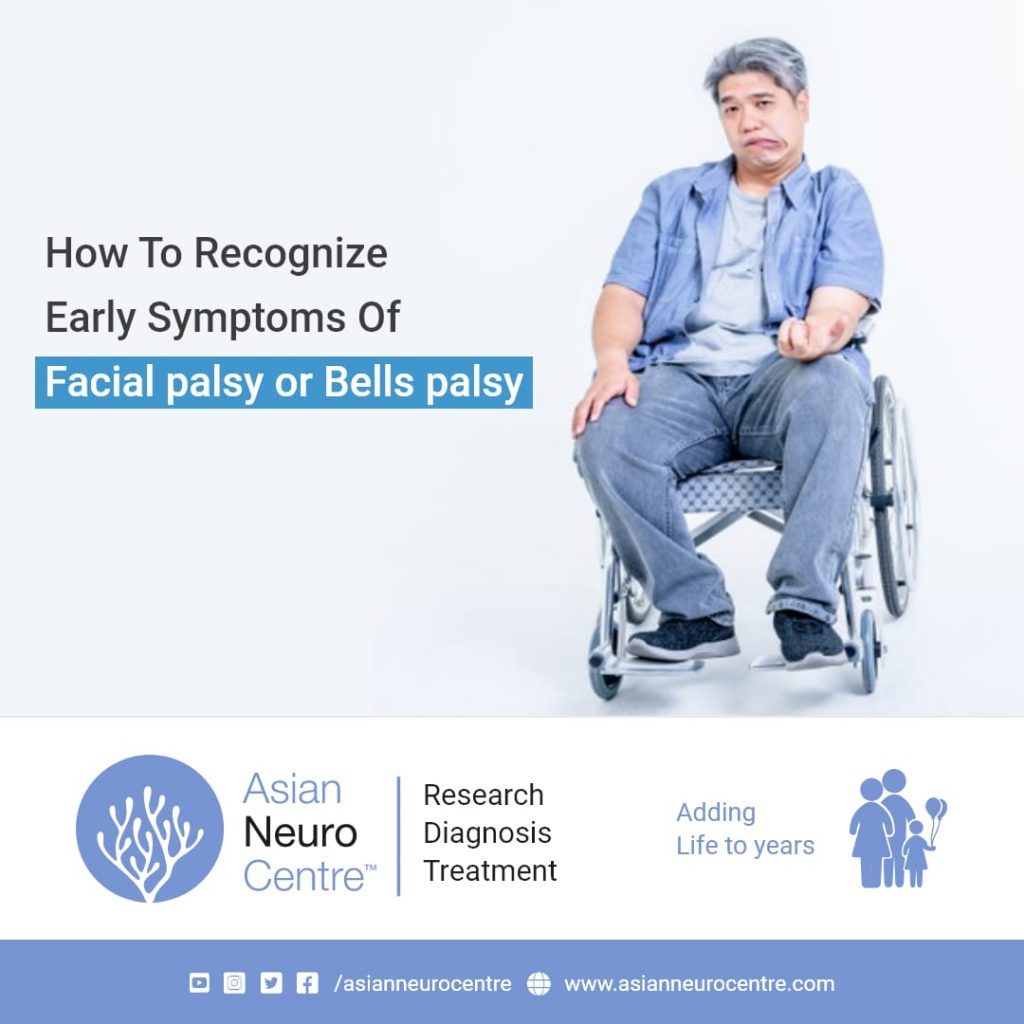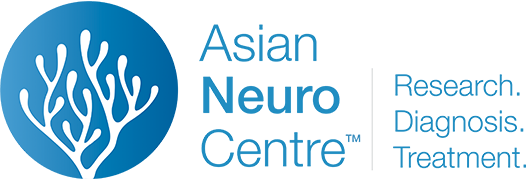- Have any questions?
- 911 12345 29
- info@asianneurocentre.com
How To Recognize Early Symptoms Of Facial palsy or Bells palsy?

WORLD MULTIPLE SCLEROSIS DAY – May 30
May 30, 2021
DO’s and DON’Ts of Neck Pain and Cervical Spondylitis
June 5, 2021Bell’s palsy is a condition that causes a temporary weakness or paralysis of the muscles in the face. It can occur when the nerve that controls your facial muscles becomes inflamed, swollen, or compressed.
The condition causes one side of your face to droop or becomes stiff. Patients may have difficulty smiling or closing their eyes on the affected side. In most cases, Bell’s palsy is temporary and symptoms usually go away after a few weeks. Although Bell’s palsy can occur at any age, the condition is more common among people between ages 16 and 60.
What are the early symptoms of Bell’s palsy?
The symptoms of Bell’s palsy can develop one to two weeks after you have a cold, ear infection, or eye infection. They usually appear abruptly and you may notice them when you wake up in the morning or when you try to eat or drink. Bell’s palsy is marked by a droopy appearance on one side of the face and the inability to open or close your eye on the affected side. In rare cases, Bell’s palsy may affect both sides of your face.
Signs and symptoms of Bell’s palsy come on suddenly and may include:
- Rapid onset of mild weakness to total paralysis on one side of your face — occurring within hours to days
- Facial droop and difficulty making facial expressions, such as closing your eye or smiling Drooling of saliva, or drinking water
- Pain around the jaw or in or behind the ear on the affected side
- Increased sensitivity to sound on the affected side.
- Headache.
- A loss of taste.
- Irritation in affected side-eye
Read More: Facial and Bell’s Palsy Treatment, Signs, Symptom’s & Risk Factors: “Dr. Navin Tiwari”

What causes Bell’s palsy?
The exact cause of bells palsy is unknown, but many medical researchers believe it’s most likely triggered by a viral infection or systemic disease like;
- herpex simplex virus, which causes cold sores and genital herpes
- sarcoidosis, which causes organ inflammation
- herpes zoster virus, which causes chickenpox and shingles
- Epstein-Barr virus, which causes mononucleosis
- Lyme disease, which is a bacterial infection caused by infected ticks.
Who is at risk of bells palsy?
Men and women are affected about equally. One thing that is interesting that many people may think that they are having a stroke when they develop facial drooping, but a stroke will also lead to weakness on the side where the face is drooping.
The risk for developing Bells palsy increases if you:
- are pregnant
- have diabetes,leprosy,sarcoidosis,head trauma
- have a lung infection
- have a family history of the condition
Assessment:
Neurologists will first perform a physical examination to determine the extent of the weakness in your facial muscles. He’ll also ask you questions about your symptoms, including when they occurred or when you first noticed them.
Doctors can also use a variety of tests to make a Bell’s palsy diagnosis. These tests may include blood tests to check for the presence of a bacterial or viral infection. Doctors might also use an MRI or CT scan to check the nerves in your face.
How is Bell’s palsy treated?
It can take several weeks or months for the muscles in your face to regain their normal strength.
The following treatments may help in your recovery.
Medication
- corticosteroid drugs, which reduce inflammation
- antiviral or antibacterial medication, which may be prescribed if a virus or bacteria caused your Bell’s palsy
- over-the-counter pain medications, such as ibuprofen or acetaminophen, which can help relieve mild pain
- eye drops
Home treatment
- an eye patch (for your dry eye)
- a warm, moist towel over your face to relieve pain
- facial massage
- physical therapy exercises to stimulate your facial muscles
Effective treatment depends on getting the right diagnosis as soon as possible.
At our center, Dr. Navin Tiwari who is among the best neurologist in Indore has a long history of recognizing and treating tough medical problems that go undiagnosed elsewhere. Thorough, thoughtful, and comprehensive evaluations and consultations are done for better results in the treatment of Bells or Facial palsy.
Our aim is to provide personalized attention and individual care you need — so you can heal faster and get back to the activities and people you love most.
For more information pls call at 9111234529 or write to us at info@asianneurocenter.com

